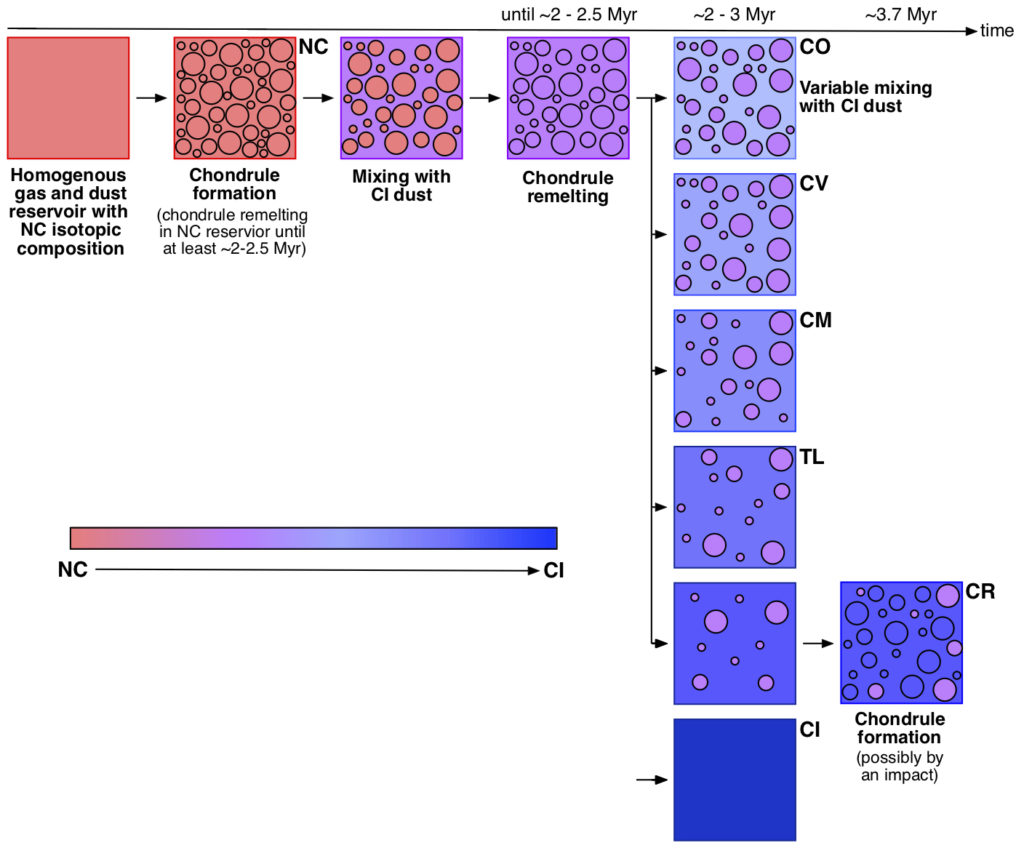Constraints on Chondrule Generation, Disk Dynamics, and Asteroid Accretion from the Compositions of Carbonaceous Meteorites
James F. J. Bryson and Gregory A. Brennecka
The Astrophysical Journal, Volume 912, Number 2
The elemental and isotopic compositions of meteorites are expected to reflect several key processes that occurred in the early solar system, including the migration of gas and dust throughout the protoplanetary disk, the formation of chondrules, and the accretion of the first planetary bodies. However, the specific origins of the various compositions measured among these rocks are currently poorly constrained, limiting our understanding of these processes. Here, we use previously measured elemental and isotopic compositions of chondrites and iron meteorites to identify that carbonaceous (CC) meteorites are mixtures of noncarbonaceous (NC) material, calcium–aluminum-rich inclusion (CAI) material, and CI (Ivuna-like) material, in varying proportions. These trends indicate that chondrules in CO (Ornans-like), CM (Mighei-like), CV (Vigarano-like), and TL (Tagish Lake) chondrites share near-identical average proportions of CI material, arguing that they were generated through the remelting of preexisting NC chondrules all in the same disk environment. Because this proportion likely evolved over space and time throughout the disk, this similarity argues that these chondrules originate from a restricted spatial region and time interval, favoring their generation through a localized event. Moreover, the compositions of CR (Renazzo-like) chondrites indicate that their constituents formed through mechanisms different from those in CO, CM, CV, and TL chondrites. The recovered proportions of CI material in CC iron meteorites and chondrites together also argue for evolution in either the predominant direction of dust and gas motion in the first ~10 au of the disk or the radial distance of planetesimal accretion throughout the CC reservoir.

































